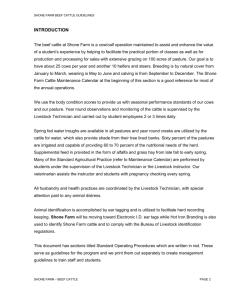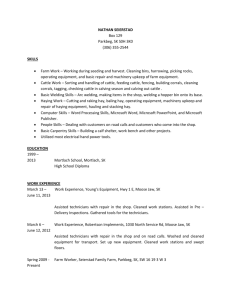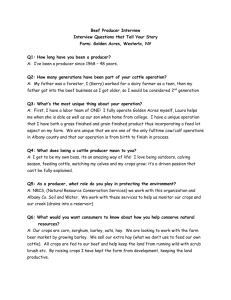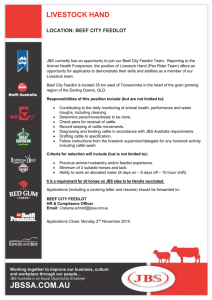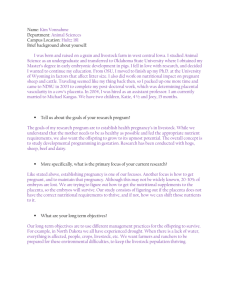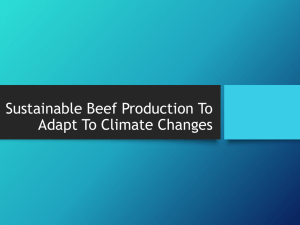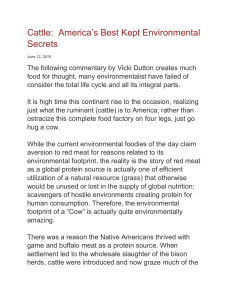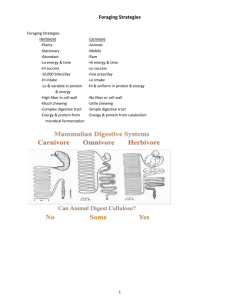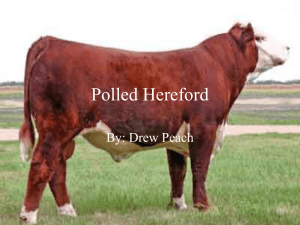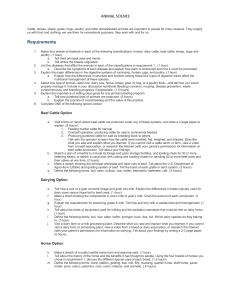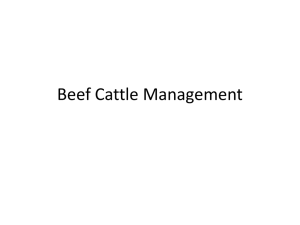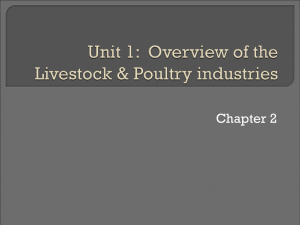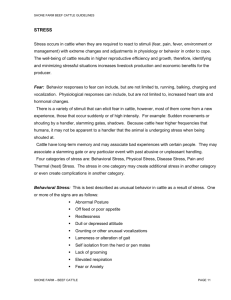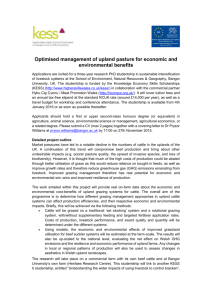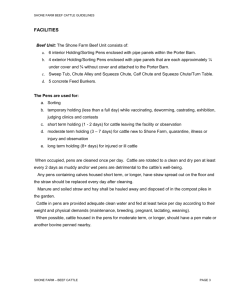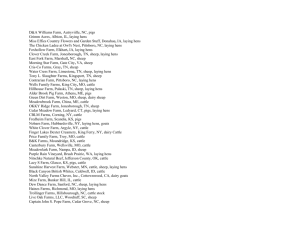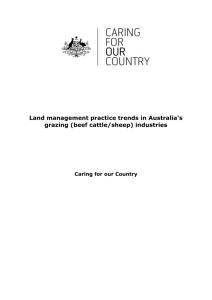Beef Producer Interview Kinderhook
advertisement
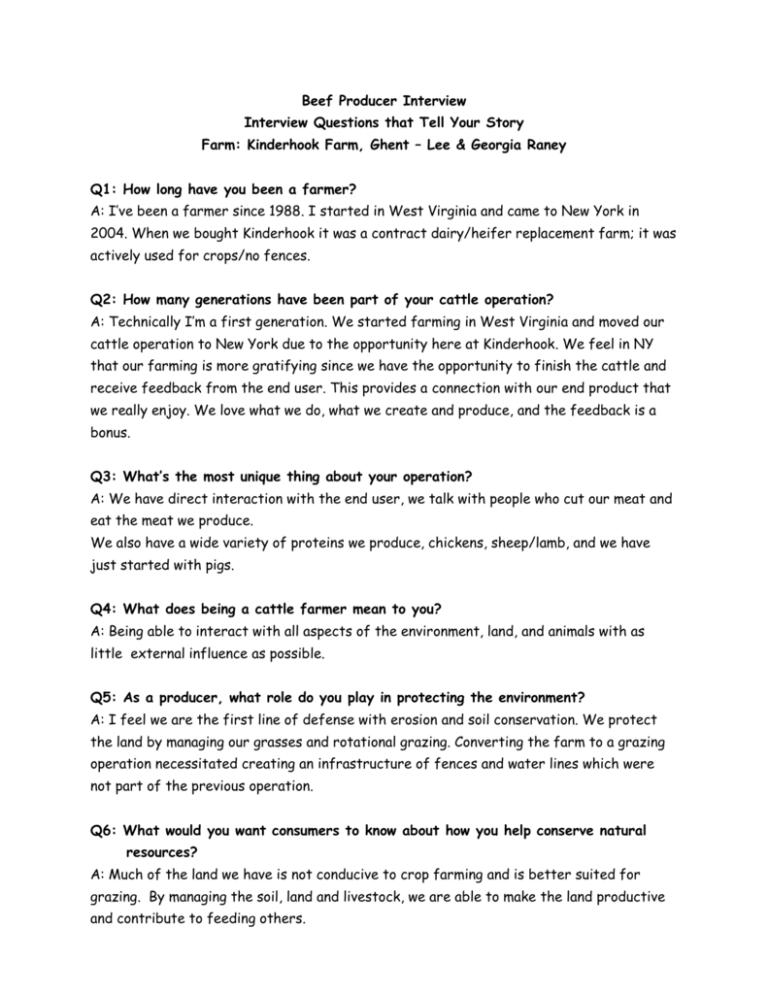
Beef Producer Interview Interview Questions that Tell Your Story Farm: Kinderhook Farm, Ghent – Lee & Georgia Raney Q1: How long have you been a farmer? A: I’ve been a farmer since 1988. I started in West Virginia and came to New York in 2004. When we bought Kinderhook it was a contract dairy/heifer replacement farm; it was actively used for crops/no fences. Q2: How many generations have been part of your cattle operation? A: Technically I’m a first generation. We started farming in West Virginia and moved our cattle operation to New York due to the opportunity here at Kinderhook. We feel in NY that our farming is more gratifying since we have the opportunity to finish the cattle and receive feedback from the end user. This provides a connection with our end product that we really enjoy. We love what we do, what we create and produce, and the feedback is a bonus. Q3: What’s the most unique thing about your operation? A: We have direct interaction with the end user, we talk with people who cut our meat and eat the meat we produce. We also have a wide variety of proteins we produce, chickens, sheep/lamb, and we have just started with pigs. Q4: What does being a cattle farmer mean to you? A: Being able to interact with all aspects of the environment, land, and animals with as little external influence as possible. Q5: As a producer, what role do you play in protecting the environment? A: I feel we are the first line of defense with erosion and soil conservation. We protect the land by managing our grasses and rotational grazing. Converting the farm to a grazing operation necessitated creating an infrastructure of fences and water lines which were not part of the previous operation. Q6: What would you want consumers to know about how you help conserve natural resources? A: Much of the land we have is not conducive to crop farming and is better suited for grazing. By managing the soil, land and livestock, we are able to make the land productive and contribute to feeding others. Q7: What’s the most important thing you do for the environment on your operation? A: We manage grass. We try to keep a sod cover and keep growing material on the land as much as possible. We don’t fertilize what we graze but we fertilize what we hay. If we are taking nutrients off the land e.g. hay for winter feed, we need to add nutrients back in the form of fertilizer. The pastures are naturally fertilized with the manure from the grazing cattle and other livestock to replace nutrients. It needs to be a balance between taking from the land and giving back. The fields that are not fenced eliminates them from grazing so they are used for hay to provide winter feed for the cattle. Q8: Have you made any changes recently to further address your operation’s sustainability? A: Our definition of sustainability is to bring in as few external inputs as possible while maintaining or improving the land in addition to providing a living and sustenance. At Kinderhook, we have access to a market for our product that enables us to do this with a grass based operation. To ensure our sustainability, we have diversified our livestock base. The sheep help with grazing and parasite management. Cattle and sheep eat differently based on favorite grasses in the fields, parasites from cattle don’t survive in the stomach of a sheep and vice versa, thus aiding the parasite control. Q9: What will your legacy as a cattle producer be? What will it be to the environment? What will it be for your family? A: We enjoy and encourage interns to work with us on the farm in hopes that we can teach them how to manage the land and livestock. As for the environment, I hope our legacy would be that we have ensured retention of a little more top soil on our land. We have approximately 1000 acres, 550 are pasture/hay the rest are woods. Q10: What should consumers know about your daily life and how you are helping to feed America? A: My primary function is to manage livestock in a manner consistent with their animal being and the natural resources available on the farm and maximize their value as a food product. Q11: How do you educate future generations about the cattle industry? A: We consistently bring in interns in hopes to better educate the next generation. We have a small retail store on the farm and our customers can come and observe how we raise our product. Q12: What actions do you take to ensure your animals are properly taken care of? A: I look at them. 365 days of the year it’s the first and last thing I do in a day, if the animal is out of sorts, I know it immediately. We bring in a vet 3 times/year for our pregnancy management and have the vet come in 4-5 times/year to help us manage the health of our cattle. Our farm has been awarded the Animal Welfare Approved seal for excellence in animal husbandry. Animal Welfare Approved audits and certifies family farms that raise animals with the highest animal welfare standards, on pasture or range. Q13: What do you do to ensure beef safety? A: We conform to BQA (Beef Quality Assurance) standards, judiciously use antibiotics based on withdrawal time, etc. and use a reputable processor for our meat. Q14: What are some challenges you feel are facing the beef industry? A: The ever evolving story about animal agriculture, trying to keep the story straight without being antagonistic or defensive about what we do. Q15: What breed of cattle do you raise? Why did your family choose to raise this breed of cattle? A: Angus and Red Devons. We chose these breeds due to the familiarity of the Angus and we wanted to diversify with the Devon. The Devon is a breed that is known to perform well in grass finished operations. Q16: What type of marketing programs do you use for your cattle? (e.g., natural organic, conventional) A: We market our meat as grass-finished or “pasture finished” to customers who are looking for this type of product and want to know how the animals were raised. We have an on-farm retail store as well as selling our beef to butchers in Brooklyn. Q17: How do you see all of the steps in the production chain working together? A: Our farm is fully integrated from conception to retail product. We are a seed-stock, cow-calf, stocker and feed lot all rolled into one with the addition of a retail store to sell our product. The only thing outside our control is processing and that is done by a small processor and the meat is returned to us to market. Q18: What’s the best part about being a beef producer? What’s not so great? A: The best part is working the puzzle between the animal, environment and consumer. Our job is to make it all fit together and make a small living at it. The not so great part…small business strife, paper work, red tape of small business management/ownership.
